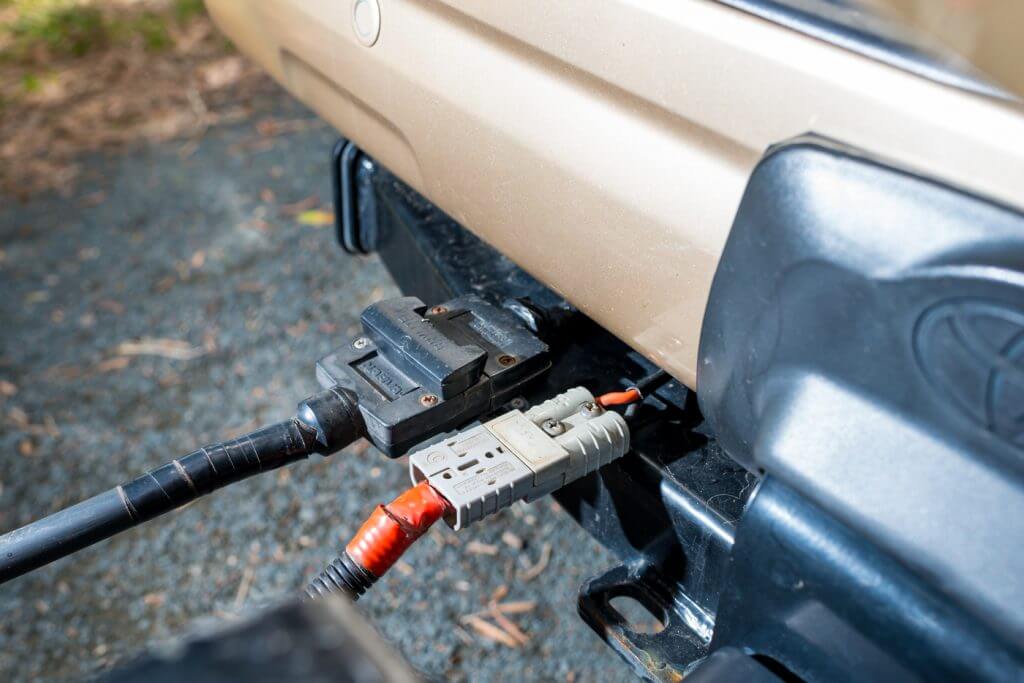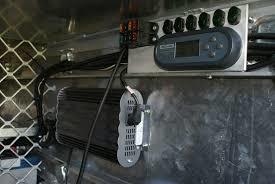
Anderson plugs are fast becoming the norm on camper trailer 12V systems but are they enough? We reveal what you need to know to stay in charge.

With more and more people getting out there in their 4WDs and camper trailers than ever before, the need for better-equipped vehicles and trailers is upon us. Lighting, fridges and battery charges for those power-thirsty cameras and phones place great demands on a rig’s 12V electrical system.
Many new camper trailers come with Anderson plug connections on the a-frame to help make better use of your fourbie’s 12V power system, but you need to consider a few things to make it work.
Here are our top tips on making your rig’s 12V system run better for longer.
Before we discuss Anderson plugs and wiring, we need to talk about battery storage. There are different types of batteries suitable for use in a camper trailer, and the most common is a deep cycle battery. These batteries, unlike your starter battery, are designed to discharge to about 80 per cent, many times over. They are usually rated in ampere hours (Ah) so you can calculate the amount of discharge time you have, according to the amount of power you are using.
Many travellers find it hard to get by solely using the vehicle’s alternator to recharge their camper trailer battery bank via the Anderson plug. But with the addition of some quality solar panels, you can replenish your power usage while the rig is stationary.
There are four different types of solar panels, and they can be either mobile, as in fold-out panels or a solar blanket, or fixed to your trailer (or vehicle) according to your particular needs.
You can use the Anderson plug on your camper trailer’s a-frame to introduce portable solar panels into the power mix depending on your system, but be sure to fit a regulator between the battery bank and the panels to avoid damaging the battery through overcharging.
To maximise your 12V electrical system’s capabilities, you really need to install a DC-DC charger between the Anderson plug and your battery in your camper trailer, and under your fourbie’s bonnet if you have a second in-car battery installed. DC-DC chargers let you achieve close to 100 per cent charging capacity to your auxiliary batteries. And the closer you fit it to your battery, the better it works.

The vehicle’s alternator will only top up your auxiliary batteries to 75 per cent capacity (at best) due to the available voltage, leaving you with precious little power when you consider the 20 per cent reserve required to maintain your battery bank. There are several brands of DC-DC chargers on the market; these can be installed by most auto electricians, 4WD parts suppliers and even DIY.
When it comes to 12V wiring for your vehicle and camper trailer needs, bigger is better! A 50A Anderson plug handles a fair bit of power but if your electrical wire is too thin, the voltage will drop too low to charge the battery effectively. The wiring to the rear of your vehicle needs to be a minimum of 6mm and no longer than 5-6 metres, to minimise this voltage drop.
Good quality Anderson plugs maintain their connections over the roughest terrain. They’re not only useful as a trailer-4WD connection, either. They’re also great replacements to common 12V cigarette lighter outlets that tend to ‘pop-out’ over those bumpy tracks, especially for high draw touring essentials like your fridge.
There are many suppliers of quality 12V electrical systems, ranging from basic to the most complex systems, and they can assist you with calculating your power needs, so you fit the system that best suits you. All of these systems can be DIY also, though check your power needs and make sure you use quality components, to avoid any issues during your travels.
– Michael Boyle, 4WD Adventures & Training Australia.
At Mars Campers we work hard to develop the best value for money camper trailers with a view of helping you create memorable experiences with your loved ones.
Did you find this information useful? If you found even one tiny nugget in this material to be useful, please do forward it to one of your friends. I am sure they will thank you for it. You can send it to them via email, Twitter, Facebook or post it on your own website.